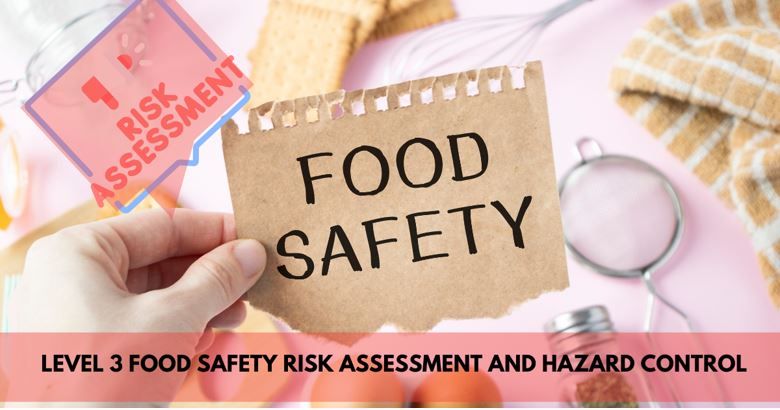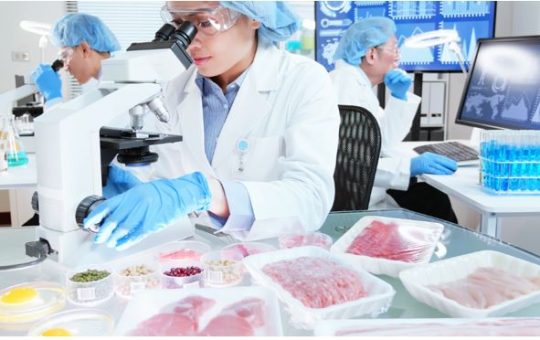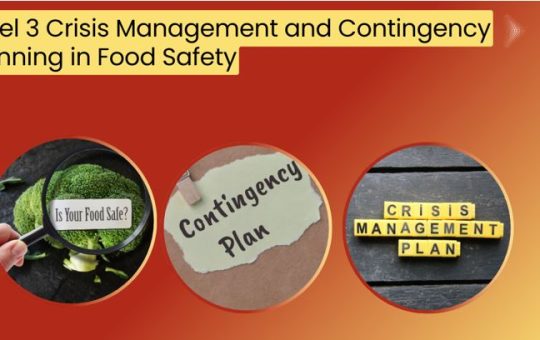
Level 3 Food Safety Risk Assessment and Hazard Control
Course Overview:
The Level 3 Food Safety Risk Assessment and Hazard Control course is designed for individuals responsible for food safety in food production, catering, and hospitality environments. This course offers an advanced understanding of risk assessment and hazard control measures essential to ensure food safety at every stage of production and service. Participants will gain knowledge of identifying potential food safety risks, conducting thorough risk assessments, and applying control measures to reduce the likelihood of foodborne illness outbreaks. It is ideal for supervisors, managers, and food safety professionals aiming to develop and implement effective food safety management systems within their organizations.
Benefits:
- Advanced Knowledge: Gain a deeper understanding of food safety hazards and how to assess and control them effectively.
- Practical Skills: Learn how to apply risk assessment techniques to identify, evaluate, and control food safety hazards.
- Improved Compliance: Equip your organization with the ability to meet food safety regulations and industry standards.
- Career Advancement: Enhance your qualifications and skills, making you a valuable asset in food safety management and risk control roles.
Learning Outcomes:
Upon successful completion of this course, you will be able to:
- Identify and understand the various types of food safety hazards, including biological, chemical, and physical risks.
- Conduct detailed food safety risk assessments to evaluate potential hazards in food production and service environments.
- Apply control measures and management strategies to reduce or eliminate identified food safety risks.
- Develop food safety risk assessment plans tailored to your specific workplace and industry.
- Understand the legal and regulatory requirements associated with food safety risk management and ensure compliance.
- Communicate food safety risks and control measures effectively to team members, ensuring awareness and compliance.
Study Units:
- Introduction to Food Safety Hazards and Risks
- Overview of different types of food safety hazards: biological, chemical, and physical.
- The importance of risk assessment in food safety and preventing foodborne illnesses.
- Conducting a Food Safety Risk Assessment
- Learn how to carry out a comprehensive risk assessment process in food environments.
- Techniques for identifying hazards, evaluating their significance, and prioritizing risks.
- Hazard Control Measures
- Overview of strategies for controlling food safety hazards at various stages of food handling, from production to service.
- Implementing control measures, including HACCP principles, safe food handling practices, and temperature control.
- Legal Requirements and Compliance
- Study the relevant food safety regulations, such as the Food Safety Act, HACCP regulations, and ISO 22000, and their impact on risk assessment and hazard control.
- How to ensure compliance with legal and regulatory food safety requirements.
- Developing a Food Safety Risk Management Plan
- Creating an effective risk management plan based on risk assessments to ensure food safety.
- How to document findings and implement control measures across the organization.
- Monitoring and Reviewing Risk Control Measures
- Understand how to monitor the effectiveness of risk control measures over time.
- Review and adjust plans as necessary based on new risks, audits, or changes in regulations.
- Training and Communicating Food Safety Risks
- Best practices for educating employees and teams on the importance of food safety and risk management.
- How to communicate risk assessments and control measures to ensure proper implementation.
Career Progression:
After completing the Level 3 Food Safety Risk Assessment and Hazard Control course, you will be well-prepared for a variety of roles within food safety management, such as:
- Food Safety Manager: Oversee food safety practices, implement risk assessments, and ensure the continuous improvement of safety protocols.
- HACCP Coordinator: Manage the implementation of HACCP principles and lead risk assessment and hazard control initiatives.
- Risk Assessment Specialist: Conduct risk assessments in food production or service industries, identifying hazards and implementing mitigation strategies.
- Quality Assurance Manager: Ensure food products meet safety and quality standards, conducting audits and implementing control measures.
- Food Safety Consultant: Advise organizations on best practices for risk assessment, hazard control, and compliance with food safety regulations.
Our assessment process is designed to ensure every learner achieves the required level of knowledge, skills, and understanding outlined in each course unit.
Purpose of Assessment
Assessment helps measure how well a learner has met the learning outcomes. It ensures consistency, quality, and fairness across all learners.
What Learners Need to Do
Learners must provide clear evidence that shows they have met all the learning outcomes and assessment criteria for each unit. This evidence can take different forms depending on the course and type of learning.
Types of Acceptable Evidence
Assignments, reports, or projects
Worksheets or written tasks
Portfolios of practical work
Answers to oral or written questions
Test or exam papers
Understanding the Structure
Learning outcomes explain what learners should know, understand, or be able to do.
Assessment criteria set the standard learners must meet to achieve each learning outcome.
Assessment Guidelines
All assessment must be authentic, current, and relevant to the unit.
Evidence must match each assessment criterion clearly.
Plagiarism or copied work is not accepted.
All learners must complete assessments within the given timelines.
Where applicable, assessments may be reviewed or verified by internal or external quality assurers.
Full learning outcomes and assessment criteria for each qualification are available from page 8 of the course handbook.
Top Courses
No results found.
Related Courses
Let's Get in touch
Deleting Course Review
Course Access
This course is password protected. To access it please enter your password below:



